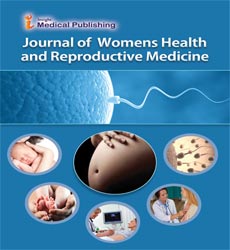Hypertensive Disorders in Pregnancy
Georgios Labiris*
Department of Gynaecology, Federico II University, Naples, Italy
- *Corresponding Author:
- Georgios Labiris
Department of Gynaecology,
Federico II University,
Naples, Italy,
E-mail: labiris123@hotmail.com
Received Date: November 5, 2021; Accepted Date: November 19, 2021; Published Date: November 26, 2021
Citation: Labiris G (2021) Hypertensive Disorders in Pregnancy. J Women’s Health Reprod Med Vol.5 No.6:e023.
Description
The four categories of hypertensive disorders of pregnancy are chronic hypertension, gestational hypertension, preeclampsia-eclampsia, and chronic hypertension with superimposed preeclampsia. These disorders are one of the leading causes of maternal and fetal morbidity and mortality. Proper diagnosis in the emergency room is important in initiating proper treatment to reduce potential harm to the mother and foetation. Immediate treatment if blood pressure exceeds 160/110 mm Hg or if there are other serious symptoms such as acute renal failure, elevated liver function, severe abdominal pain, pulmonary edema, central nervous system disorders is needed.
Hypertension during pregnancy can be chronic (diagnosed before or 20 weeks before pregnancy) or new (either preeclampsia or gestational hypertension). Chronic hypertension is associated with adverse effects on the mother and fetal, rigorous monitoring of maternal blood pressure (BP, 110-140/85 mm Hg), fetal growth monitoring, and the development of preeclampsia and repeatedly assessing for the development of preeclampsia and maternal complications.
White coat hypertension refers to elevated blood pressure in the office / clinic (140/90 mm Hg or higher), but normal blood pressure measured at home or at work (500,000 fetal and neonatal deaths and 70,000 maternal death). Prenatal disease can worsen rapidly) Mild or severe assessment is not recommended. Masked hypertension is another form of hypertension that is more difficult to diagnose and is most common, characterized by blood pressure that is normal when visiting a clinic or office, but rises at other times.
Preeclampsia is de novo hypertension after 20 weeks of gestation with no proteinuria and no biochemical or haematological abnormalities. There is usually no limit to the growth of the foetation. Pregnancy with preeclampsia usually results in good results, but occurs in about a quarter of women with preeclampsia (especially with 500,000 fetal and neonatal deaths and over 70,000 maternal deaths). Preeclampsia can develop rapidly without warning. Syndrome haemolysis, increased liver enzymes, and decreased platelet count are (severe) symptoms of pre-eclampsia, not an independent disease.
First or second trimester test or set of tests cannot reliably predict the development of all cases of preeclampsia; however, a combination of maternal risk factors such as Blood pressure, placental growth factor and uterine artery Doppler can select women who may benefit from 150 mg/dl of aspirin to prevent preterm (before 37 weeks gestation) but not term preeclampsia. Women considered at increased risk for preeclampsia as above should receive supplemental calcium (1.2-2.5 g/d) if their intake is likely to be low (<600 mg/d), in addition to aspirin. When intake cannot be assessed or predicted, it is reasonable to give calcium.
Low molecular weight heparin is not indicated to prevent preeclampsia, even with a history of prior early onset preeclampsia. Women should exercise during pregnancy to maintain health, appropriate body weight, and reduce the likelihood of hypertension.
Open Access Journals
- Aquaculture & Veterinary Science
- Chemistry & Chemical Sciences
- Clinical Sciences
- Engineering
- General Science
- Genetics & Molecular Biology
- Health Care & Nursing
- Immunology & Microbiology
- Materials Science
- Mathematics & Physics
- Medical Sciences
- Neurology & Psychiatry
- Oncology & Cancer Science
- Pharmaceutical Sciences
